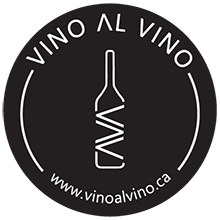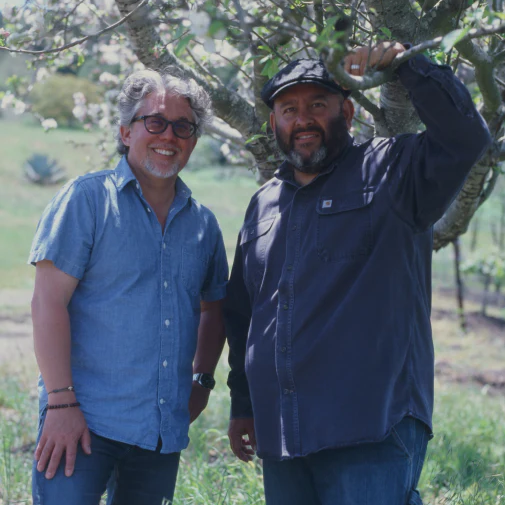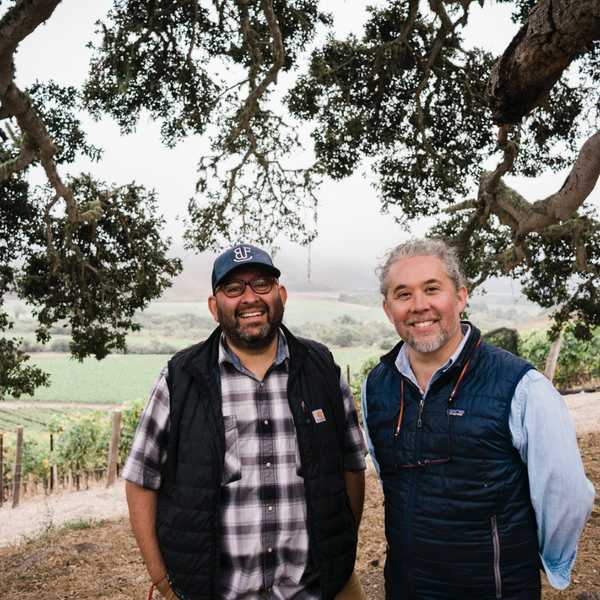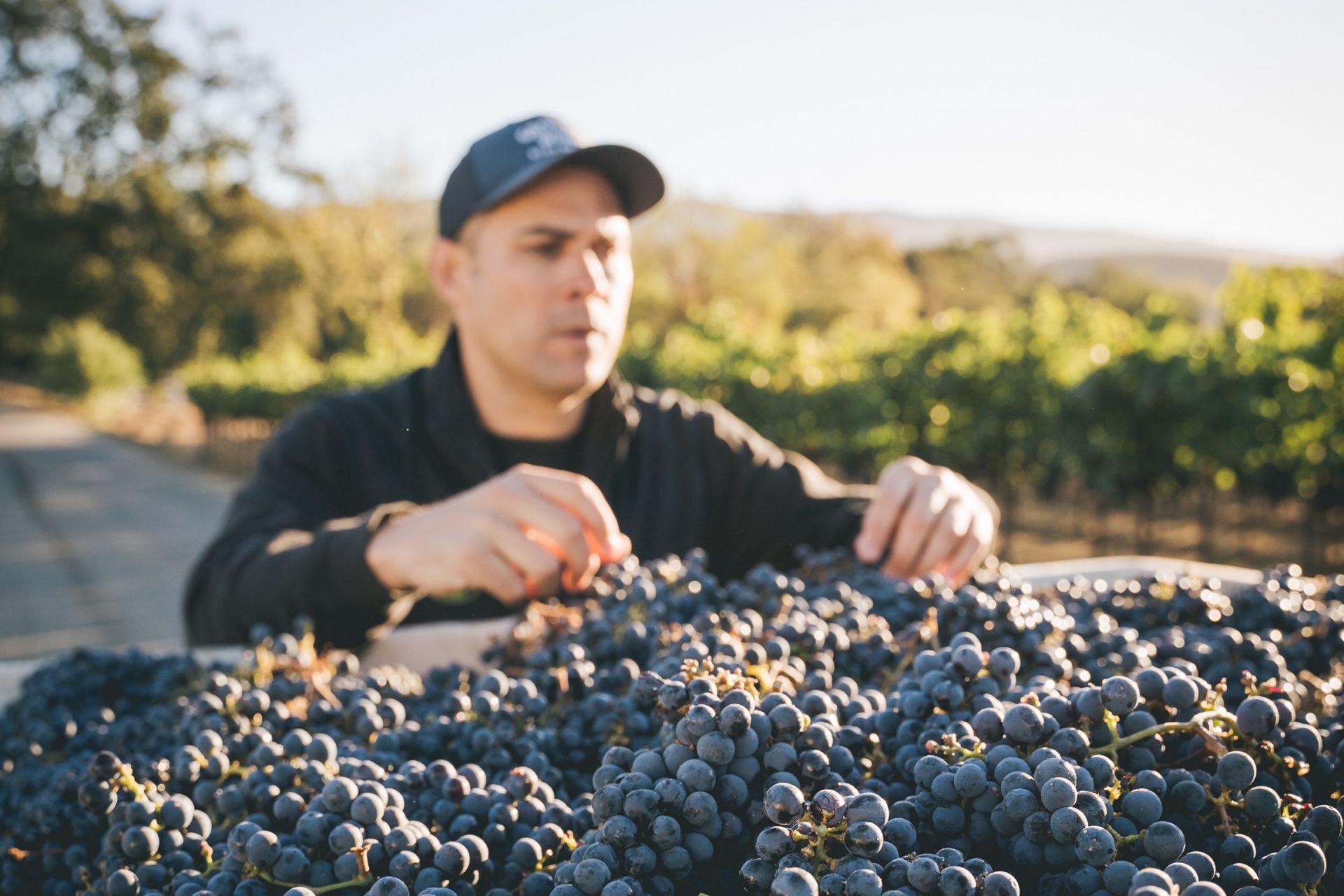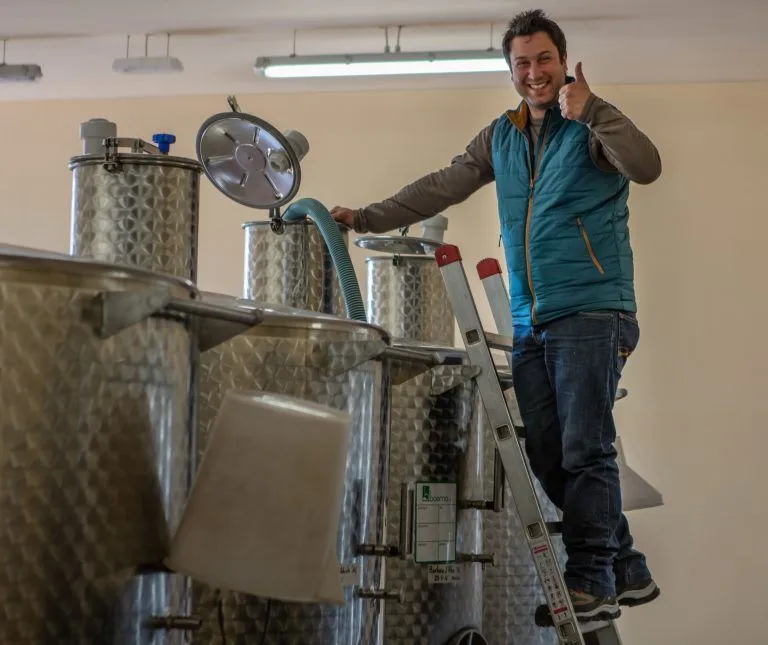What is Natural Wine | The In-Depth Guide
You have probably heard the term natural wine. At that time, you may have asked yourself, “What is natural wine?” or “How does it differ from the wine I usually drink?” or “Is the juice worth the squeeze?” Well, we think so! So much so that we started a company to focus on it.
But let's not get ahead of ourselves. The important thing to understand is that the way you go about making “natural” wine and “conventional” wine is quite different. One of them is like carving out a bronze statuette where the end result is highly dependent upon the artist’s hand… and the other well, it is like getting that statuette out of a mould. Still a statuette. But which one would you rather have?
In this article, we will not only explain how natural wine is made but also what are the differences between natural and conventional wine. Finally, we will tell you where you can find natural wines.
What is Natural Wine?
Natural wine is a wine produced with minimum inputs and minimum intervention deriving the truest expression of grapes and terroir.
As one of our producers says, "For me, wine is born in the vineyard. We just accompany it. Don't want to add anything to it. On the contrary, we want to work out the potential of the vineyard in the wine. And the best way to do this is to use the conscious “less is more” method."
What is Quality in Wine?
We have been thinking about this for a very long time. We have talked to tens and tens of wine producers.
If a wine corresponds to analytical standard values and a certain taste profile, it may be bottled as [insert an appellation and classification]. But does this really denote quality? No. The examples of producers choosing to label their wines as simple table wine rather than using a prestigious classification are too numerous to ignore. After all, the most famous example in history is the birth of the Super Tuscans.
The collective conclusion is that
quality is a result of the conscious and respectful treatment of nature and people. A good way to achieve outstanding quality in wine is therefore the holistic approach of viticulture, a way where living conditions and quality of life are improved. The result is great terroir wines that reflect the soil, the climate and the signature of the winemaker and are full of liveliness, excitement, depth and drinking pleasure. Wines that give and touch beautiful moments. Wines with added value!
Viticulture
All natural and
biodynamic producers share a common belief,
“Wines are made in the vineyard, not in the cellar”. As such, they maniacally obsess over creating a complete and healthy ecosystem with a polyculture of plant and animal species. The process of natural wine has very specific characteristics, which make the final result very unique.
Soil
It all starts with soil and soil preparation. Most natural winegrowers, don't plow the vineyards at all and when they do, they use horses or donkeys instead of heavy machinery, such as tractors. Heavy machinery compacts the soil and does not allow the permeation of rainwater and oxygen which is essential for the vitality of the plants.
The land in between the rows of vines is covered with various crops: flowers, herbs, vegetables, grass and clover. Cover crops are beneficial for many reasons: to protect the soil, prevent erosion, cool the soil, suppress weeds and provide nutrition. Cover crops are an excellent source of nitrogen. They also support integrated pest management by increasing biodiversity, supporting pest predators and providing a natural nutrient cycling system to enhance soil and vine health.
Winegrowers that rely on cover crops do not plow. This allows for the carbon to be sequestered from the atmosphere and stored in the soil. This accelerates natural and biodynamic producers' journey towards being carbon neutral and carbon negative.
If you would like to learn a bit more about the importance of soil health, we highly recommend Kiss The Ground. a movie directed by
Josh Tickell and Rebecca Harrell Tickell and narrated by Woody Harrelson.
Weed Control
Instead of using chemicals or machinery, natural winegrowers rely on animals, typically sheep. This brings a lot of benefits. According to Stefano Menti, a 5th generation winegrower, and the driving force behind Menti and other wine projects, “sheep replace tractors and reduce greenhouse gas emissions, save money on fuel, and help to create healthy soils with the microorganisms they leave behind in manure.”
Ecosystem
Natural and biodynamic winegrowers eschew the use of agrochemicals, such as
pesticides or fertilizers. Instead, they use organic components, such as biodynamic preparations. Some of them are:
- Preparation 500 (Cow Horn Manure): It consists of stuffing a cow horn with cow manure and then burying it in the ground between November and February. This preparation is then sprayed in the vineyards four times a year to regenerate the soil.
- Preparation 501 (Horn Silica): Cow horn is also used in this preparation, but it is filled with fine quartz crystals. The horn is then buried in the ground between the months of March and April. After that time, it is sprayed among the vines, usually early in the morning. The 501 preparation helps to increase plant immunity.
- Preparation 508 (Equisetum/Horsetails): This preparation consists of boiling or fermenting equisetum, a plant rich in silica. It is used to prepare an infusion similar to tea, which is sprayed in the morning to prevent fungal diseases and mildew.
- Dung Compost: This preparation has two functions: to promote the formation of microbial life in the soil and the decomposition of plants and organic matter. For the preparation, components such as cow dung, eggshell and basalt powder are mixed.
Grapes
At a minimum, grapes are grown organically. This way
the grapes develop naturally in full respect of the environment rather than being bent by chemical inputs.
Grapes are picked, typically by hand, when
they reach desired ripeness. This not only
avoids fruit loss (something that can occur in machine harvesting) but also allows the selection of berries that are in the best condition
(without disease or pest damage). Some producers use wood crates to collect the grapes because wood
absorbs the juice of the punctured berries and prevents the fermentation process from starting.
Fermentation
Natural wine differs from that of conventional wines in how the fermentation is carried out. Everything in natural wine occurs naturally, and the fermented grape juice is produced with traditional practices, with no, or low intervention. As such, most natural wines start the fermentation process spontaneously with the ambient yeast on the grape skins. Some producers create their own “mother yeast” (yeast present in grape bunches, preserved in cold, which is reactivated in small quantities) to start the fermentation process and have better control over the process.
Fermentation Vessels
Natural wine producers use variety of fermentation vessels made of different materials. Vessels impart
different characteristics and properties to the wine depending on its
shape, material, porosity and so forth. Some of the most commonly used are:
Concrete Eggs and Concrete Tanks
Concrete eggs, as their name suggests, are oval-shaped, similar to an egg. This allows the wine to mix in a smooth and natural way, as well as promotes a circulatory movement inside the concrete egg.
Another aspect to highlight is the walls of the concrete egg, which are porous. This allows the wine to have a small amount of contact with the oxygen from the outside, without causing a great deal of oxidation but allowing the aromas of the wine to intensify.
Finally, concrete gives
mineral properties to the wine. This allows it to gain a
particular texture, different from other wines you have tasted, as well as a greater
purity of flavour.
Amphorae
Amphorae are another popular vessel type used in natural wines. Originally, they were widely used in the area of Georgia (with the name of Qvevri or Kvevri). It is believed that the oldest ones date back to 6,000 years ago.
Amphorae can be made of different materials, although most commonly they are made of clay. This not only gives the wine certain mineral properties but also provides more earthy and nuttier notes.
Another particular characteristic of the amphorae is
the way in which the wine is preserved in them. Traditionally, in Georgia, the vessels with the wine are
buried in the ground, together with indigenous or wild yeasts (present in the air). The lack of sun and the
low temperatures
of the soil help fermentation to gradually and completely.
Ceramic Vessels
Another material used to ferment wine is ceramic, particularly ceramic eggs.
These, as their name suggests, have
the same shape as concrete eggs. The difference is in the walls and the type of material. Ceramic eggs have
thinner walls. This, coupled with the
higher permeability of the ceramic, allows
the temperature of the walls to be reduced, producing what is known as a
vortex. The vortex, according to some winemakers,
reduces the need to remove the lees.
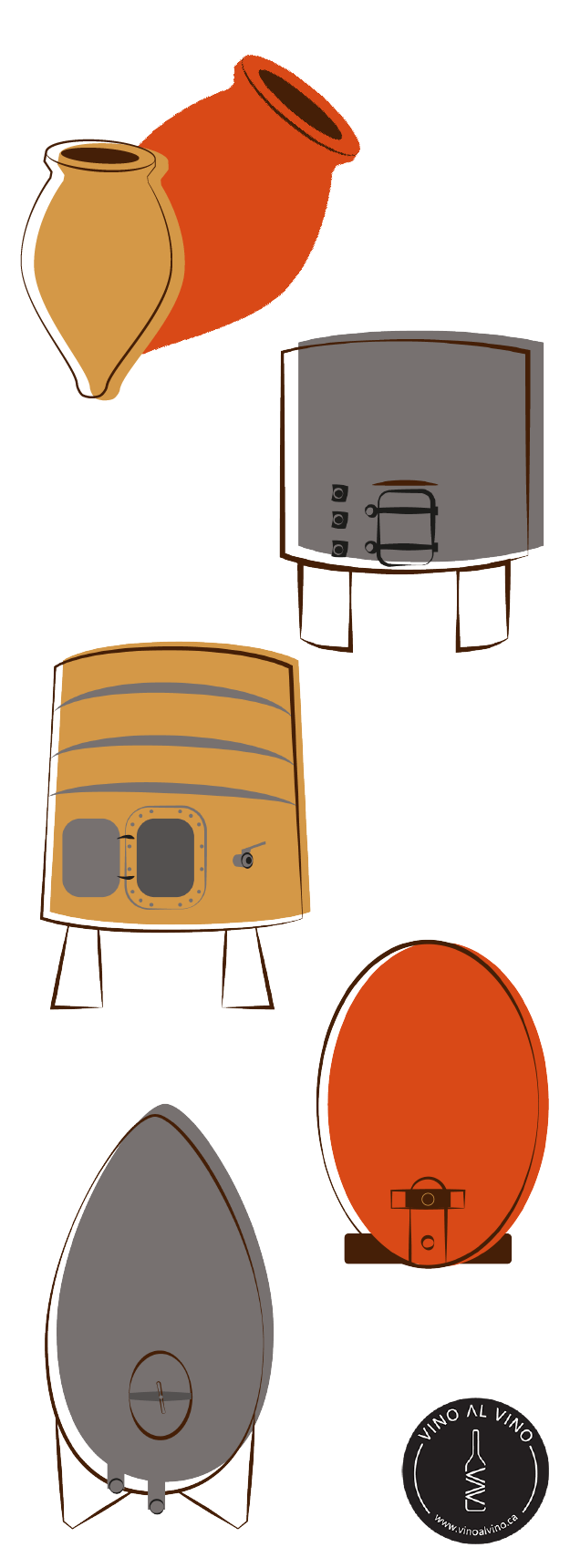
Fining
Wine fining is mainly performed on conventional wines to eliminate sediment, improve wine colour or reduce bitter flavours. Most producers don't use anything at all and simply allow the time to settle on its own over time. This is in keeping with their goal to minimize intervention. And when they do, they use bentonite, a 100% organic ingredient, to fine the wine. This is because bentonite can absorb various sizes of proteins and stabilizes the proteins in the wine.
Filtering
Typically, natural wines are not filtered. As such, some natural wines may be cloudy in appearance. Instead, winegrowers typically rely on a process called racking:
- First, the wine is allowed to settle in the tank. This allows the spent yeast cells to settle to the bottom of the tank.
- The wine is then transferred to another tank, taking care not to remove the sediment.
- Finally, the process is repeated until the desired level of clarity is reached.
Sulfites
At most, some “natural” winemakers add a minimum amount (< 50 parts per million (PPM)) of sulphites at bottling. This allows them to
stabilize and
preserve the wine better until it reaches your table. Despite this, these wines
have significantly fewer sulphites than conventional wine.
No wine is 100% sulfite-free. This is because sulphites are naturally occurring and present on grape skins. However, some natural wines are zero-added sulphite wines.
Zero-Added Sulfite Wines
So, how do you know if you are drinking “zero added sulphites” wine? Well, most countries require a label state if a wine contains more than 10 PPM (particles per million) of sulphites. Some of these wines are referred to as “brutal” or “brutes”. Most natural wines cap out at around 45 PPM, far less than the 100 PPM allowed in organic wine and 200 PPM in conventional wine.
The process of "guiding" natural wine is more
artisanal and in some ways a lot more
precise. The winegrower has to pay constant attention to what happens in the vineyard and in the cellar. Unlike, conventional wine producers, winegrowers do not have the ability to correct something that has gone wrong. What reaches your table is the by-product of many factors, such as climate, sun, soil, polyculture, ecosystem, farming, attention and
passion. Natural wine allows you to appreciate the real characteristics of the wine without pretense and without makeup.
What are the allowed inputs in wine?
Most people suffer from the impression that wine is simply a fermented grape juice. But this is hardly the case. Hence why the European Commission introduced the new Common Agricultural Policy reform requiring all wines, regardless of whether they originate in Europe or not to have an e-label starting on January 1, 2023, to disclose the ingredients in the wine along with caloric information. In our opinion, this is way overdue and will shed light on how wines are made. Hence, why our mantra has always been for real. honest, authentic wines.
Here, you can read more here about the e-label regulation.

What is not natural wine?
The non-natural wine, or ''conventional'' wine, is that wine that, in its manufacturing process, has received a large amount of intervention.
If you are seeing a wine advertised on a road sign, in front of a liquor store, at a low price, you can be virtually certain that this is a designer conventional wine.
Designer Wine? What is it?
Designer here stands for a mass producer, holding focus group sessions, to arrive at the most desirable flavour profile for a wine. Then, the producer works backwards, with the myriads of tools at their disposal to make a wine that matches the profile that the market found to be the most desirable.
Viticulture
The first difference with respect to natural wine can be found in the way the grapes are grown and harvested. In conventional wine, the grapes grow exposed to fertilizers and pesticides, which will eventually find their way into the wine and change the final result. In addition, to speed up the winemaking process, harvesting is not done by hand, but with machinery.
Viniculture
On the other hand, in the vinification process of natural wines, a stage that is not present in natural wines is implemented: filtration. This helps to avoid the presence of bacteria such as Acetobacter and Lactobacillus, allowing the wine to remain stable for longer. What is the problem? The final result is usually a wine more ''similar'' to others in appearance and taste.
Another big difference with natural wines is that, while the latter does not receive added sulphites (and if they do it, is in small amounts, typically less than 40PPM), in conventional wines it is more common to add big amounts of sulphites, as much as 5 to 10 times more.
What are sulfites in wine?
Sulphites, also known as sulphur dioxide, are chemical compounds found in many foods. They contain sulphite ions and help preserve the foods in which they are present.
They are usually added to wines to stabilize and preserve them for longer, prevent the wine from oxidizing faster and eliminate possible microbial agents that may be found in the wine. But the presence of sulphites in high levels also has disadvantages:
- First, drinking wine with a high sulphite content can cause headaches, an itchy nose or even gastrointestinal problems.
- Also, the addition of sulphites in wine alters its natural antioxidant properties.
- Another disadvantage of adding sulphites to wine is that it can alter its natural aromas and flavour.
- Finally, there are some people who are allergic to sulphites.
How much sulfites are in dried fruit?
Between 500 and 2,000 PPM. For comparison, natural wine has 10 to 200 times less sulfites than dried fruit. Dried fruits are among the foods highest in sulfites.
What are the origins of natural wine? Where is it going?
Although it is often said that natural wine has its origins in France (more precisely in the Loire Valley) during the 60s, it was actually produced more than 8000 years ago in another country: Georgia. There, more than 500 indigenous yeasts were used to make natural wines, mainly using the Qvevri method.
Regardless of the origin, it is true that a natural wine movement began to develop in France. This is due to the association of several producers of wine without additives, who thus began to form a community. In fact, one of the first all-natural wine tastings was La Dive Bouteille, organized in 1999 in that country.
What is hurting the image of natural wine?
- Lack of Standards: There are no commonly accepted standards on what constitutes natural wine. The term generates a lot of confusion. You don't exactly know what you are buying. In some cases, some sustainable and organic wine producers experiment making natural wines to disastrous effects. Thus, always seek out winegrowers that not only have one but a full line-up of natural wines.
- Experience and Resources: Younger winemakers have fewer vintages under their belts and fewer financial resources that they can call upon. As a result, some of the wines develop undesired characteristics. There is no substitute for experience.
- Dogma and Philosophy: It is important to have strong beliefs. But those have to be in pursuit of the best-crafted wines possible.
What is next for Natural Wine? Where is Natural Wine going?
Natural wine will continue to grow in popularity as consumer demand healthier, more environmentally friendly product.
Climate Change
Natural wine, like all wines, is under threat of climate change. Climate change is redrawing the wine region maps by shifting them away from the equator. Areas that were traditionally too cold are now producing great wines. The rising temperatures are reducing mildew and disease pressure in some cases. The weather has gotten a lot more unpredictable, severely affecting yield due to late frosts, hail, heavy rain, fires and so forth. Climate change, along with consumer demand, are driving winegrowers to adopt new sustainable practices.
Growth in Popularity
In the last 7 years, natural wine has grown 878% in (Google) search volume. This trend has only accelerated in the last 18-24 months.
The Natural Wine Revolution
The natural wine revolution is disproportionately led by younger winegrowers, in their late 20s, 30s or early 40s. This is to be expected as there is a positive correlation between age and care for the environment. What is even more exciting to see is that at the forefront of this revolution, women are leading the charge.
Zero-Zero
It is clear where natural wine is heading: more sustainable and environmentally friendly practices, as well as moving closer and closer to a zero-manipulation production process. That's the only way you can really know what you're drinking.
Is natural wine better for you?
It is often said that natural wine is "healthier" than conventional wine. And, indeed, there are many reasons to believe that this is true. But is it really true? Here we will try to find out.
Agrochemicals
There is scientific evidence that the use of agrochemicals does not only affect people who are in direct contact with them, but also those who consume food with high levels of agrochemicals.
Now, the amount of agrochemicals allowed
is regulated in each country. But, unfortunately, it is impossible to know how much pesticide has been sprayed on the grapes of the wine you are going to consume. It is also impossible to know
how much fertilizer has been used
to accelerate the growth process of the grapes. This is not a problem in
natural wines, where agrochemicals are not used, but it is a problem in
conventional wines. The use of agrochemicals
will change the final result of the wine you are drinking.
Filtering
The filtering process itself is not harmful. In fact, it has some benefits, such as eliminating possible bacteria or must residues in the wine. Now, depending on the filtering process used, the wine will keep its properties or not.
In the case of natural wines, the wine is only left to settle in the tank, so that the sediments go down to the bottom of the tank. Then, the wine is racked, which involves separating the clarified wine from the sediments. The second fermentation, also known as malolactic fermentation, is usually used to eliminate bacteria.
As a result, you obtain a wine that, although it does not contain large amounts of sediment, can have small particles, due to the lack of a traditional filtration process, which ends up giving a greater identity to the wine you are drinking.
On the other hand, in conventional wines this process is carried out in two parts: the first is done with a larger filter, which prevents the large must particles from passing through, while in the second part a smaller filter is used, to prevent the smaller particles and fermentation bacteria from passing through.
However, there are two negative aspects of ''traditional'' filtering:
- First, it tends to modify the taste of the wine, making it less interesting.
- The other aspect to keep in mind is that the mouthfeel will generally be less heavy.
In spite of that, regarding filtering, you should always take into account your personal taste.
Sulfites
First, let's talk about sulphites. These are present in various foods and are also added to conventional wine, which usually has up to 10 times more sulphites than natural wine. This does not mean that natural wine does not have sulphites (in fact, they are present in the skin of the grape) but that they do not have added sulphites (and if they do, it is to a much lesser extent than conventional wines).
The main problem with sulphites is not the headache they can cause. The big problem is that there are people who are allergic to sulphites, especially people with asthma or other respiratory problems. For these persons, consuming conventional wine can aggravate their condition.
So, in summary, although conventional wine will not always be bad for your health, natural wine will
always be safer, since it has
no chemical additives: it is just wine.
Natural Wine vs. Conventional Wine: What are the Differences?
Natural wine differs from conventional wine in several ways:
- Production Process: Natural wines are guided, with as little intervention as possible, as opposed to the process used for conventional wine. This allows you to taste the true essence of the wine, as it will not have additives, such as sulphites or colourants, nor will it be filtered, so you will find textures that you will not find in other wines.
- Grape Cultivation: In conventional wine, pesticides, herbicides, fungicides and other inputs are used in the vineyard for weed and pest control. While in natural wine no agrochemicals are used. The healthier the grapes, the better the wine is. Plus, it is better for your health.
- Grape Harvesting: In conventional wines, the process is carried out using machinery whereas in natural wines the grapes are harvested by hand. This ensures careful berry selection on the vine.
- Filtration: In conventional wine, a double filtration process is used, which can affect the taste and mouthfeel of the wine. On the other hand, many natural wines are unfined and unfiltered. This adds texture and flavour to the wine and ensures that it arrives at your table with all its properties intact.
- Clarity: Conventional wine has a ''cleaner'' appearance due to the fining and clarification process. Common fining agents include gelatine, isinglass, egg whites, casein and carbon. Natural wine can be "cloudy" or "hazy", due to the absence of using fining agents. One added benefit of natural wine is that it's often suitable for vegans, as many fining agents are made from animal products.
- Finally, while conventional wine does not contain sediment, due to the filtration process, natural wine may contain some sediment particles, that end up giving more body and texture to the wine.
Where to buy natural wine (near me)
Fortunately, the number of places selling natural wine is
steadily increasing. It is the only category in wine that continues to grow as wine consumers are increasingly more focused on the environment and the quality of the overall product. Natural wine can often be found in:
- Boutique Wine Stores are your best to find a good variety of natural wines
- Online Shops are another possibility if you can't find a place near you that sells natural wine
- Wine Clubs are another great option. But seek out the ones that focus on organic or natural wines.
Interested in getting real, honest and authentic wines delivered to your door for FREE, then sign-up for the
Vino Al Vino Wine Club. Inquire with us and join the movement!
Where to drink natural wine (near me)?
This is another very common question, especially among those who are just starting to consume natural wines: Where can I drink it?
Luckily for you, there are some specific places where you can find (and taste) the best natural wines:
- Wine bars are your best avenue to discover great natural wines. Step into any trendy new eatery or wine bar and voila! Natural wines make their stealthy debut on the wine list. Even when they don't shout it from the rooftops, bet your bottom dollar, a bunch of 'em are lurking in there!
- Independent, chef-backed, restaurants, with a sommelier or a wine director, are likely to have a diverse and well-curated wine list.
- Wine fairs and wine tastings are a great way to discover and taste new wines. There, you will not only be able to taste a great range of natural wines, but also meet the people who painstakingly craft them.
What are some of the best natural wine fairs in the world?
Here is our round-up of natural wine fairs, in chronological sequence:
- MillessimeBio (France): Typically takes place the last week of January or the first week of February. This incredible fair has been held since 1993. Among other things, you will find a lot of natural wines with self-service stands and technical talks, to learn a little more about the world of natural wines.
- Evoluzione Naturale (Italy): Every year, in January, in Grottaglie (Puglia) Evoluzione Naturale place Earth at the center of true human life. Designed for sector operators and the general public, the event presents a rich program of activities focused on the clean, honest and transparent artisanal wine production, a growing trend amngst wine consumers.
- La Levée de la Loire (Frace): Typically takes place the first week of February. The festival name has dual symbolism. It refers to he raising of dykes built on the banks of the the Loire river in order to protect the valleys from the floods of the river. In this case it refers to Loire vignerons leading the uprise towards wines with authenticity and personality. La Levée de la Loire is a wine fair organized by the Loire Vin Bio (Interprofessional Association of Organic Wines of the Loire Valley) bringing together winegrowers, traders and marketers of organic wine throughout the Loire Valley.
- Salon St. Jean (France): Probably our favourite wine fair of all time. A melting pot of incredible wines, producers and great tasters/professionals from all over the world. Not to be missed. In 2023, the wine fair will take place at Greniers Saint-Jean d'Angers in Angers, France on February 4-5.
- ViNaRi (Italy): Two legendary Italian associations of artisan wine producers, Vi.Te and VinNatur finally joined forces. On February 12-13, 2023 in Milan, 150 producers will gather, for the first time, under the same roof to showcase their wines. ViNaRi is the abbreviation for Vignaioli Naturali Riuniti (Natural Winegrowers Reunited).
- Vella Terra Fair (Spain): The independent natural wine fair Vella Terra takes place every year, in the city of Barcelona. Typically takes place the first week of April. This fair will allow you to taste new and surprising natural wines, made by small regional producers. In addition, you will find wines from the rest of the world, such as the United States, Argentina, France or Italy
- VinitalyBio (Italy): This fair takes place every year in Italy, in mid-April, in conjunction with the behemoth of a wine show that is Vinitaly, at the Verona Fair. In 2022, 115 exhibitors participated in the fair. The fair not only allows you to meet great natural wine producers but it also has a natural wine bar, where you can enjoy a delicious glass of your favourite wine. This fair will take place again in 2023, between April 2 and 5.
- Villa Favorita (Italy): The Villa Favorita wine fair take place in Venice, Italy, in the latter half of April. This year, 65 producers will participate. Each one of them has a particular story to tell you, and it is really exciting to know exactly how the production process is for each of their wines.
- The Real Wine Fair (England): Every two years, this great natural wine fair is held in the city of London in the latter part of May. It takes place over two days. In this fair, you will learn the stories of the producers of your favourite wines (and even find new wines). Also, you can find various restaurants and manufacturers of sustainable food, with which you can pair your glass of wine.
- Nat Diego (USA): Nat Diego is one of the largest and most important local natural wine fairs in the world. This fair took place in San Diego on June 17 and 18 of this year. At this event, you can not only find a lot of fantastic and delicious natural wines made by local producers. You will also find great exponents of international natural wines.
- Wild Wine Fair (Scotland): This is the first natural wine fair in Scotland. This year it took place in Timberyard, a restaurant in Edinburgh, on July 24th. Not only did it feature the best exponents of natural wine in Scotland and the UK, but also some organic craft cider makers.
- Vini di Vignaioli (Italy): Vini di Vignaioli is an Italian natural wine fair, which will take place during October 29-31 this year. The first day is dedicated to an excursion with the organizers of the event, to the Parco Regionale dei Boschi di Carrega, located in Emilia Romagna. During the following two days, you will be able to enjoy screenings and lectures related to natural wines, as well as taste the best French and Italian exponents.
- Salon Brutes (France): Salon Brutes is another fair held in France. The last one took place on November 2 and 3 of 2019, and the next one will be on November 5 and 6 of 2022. At this fair, you will be able to find fantastic exponents of French, German, Swiss, Austrian and Italian natural wines.
- The Wine Revolution (Italy): The fifth edition of this fair will take place in Italy on November 13 and 14 of 2022. The last edition was attended by 71 natural wine producers, most of them Italian, although there were also producers from countries such as Slovenia. At this event, you will not only be able to enjoy some exponents of the best natural wine, but you will also be able to accompany it with delicious food.
- Mercato dei Vini (Italy): Mercato dei Vini (or the Wine Market) is one of the most important wine fairs for independent producers. The fair takes place at the end of November. In 2022, it is scheduled to take place during November 26 - 28. The wine fair is put together by FIVI (The Italian Federation of Independent Winegrowers). In 2022, there are 870 registered winegrowers from all regions of Italy, plus special booths for the Bulgarian and Slovenian Associations of Independent Winegrowers.
- RAW Wine Fair (Germany, England, Canada and USA): The RAW WINE Fair is probably one of the biggest events where you can find your favourite brands (and others you may not know about) of natural wines. This fair, which is organized in different parts of the world, will arrive in Canada on November 16. It is an excellent opportunity to enjoy a good glass of your favourite natural wine while meeting the people behind that wine.
Final Thoughts
Natural wines have been made for thousands of years—though they're enjoying a boom in popularity recently. The Natural Wine movement began in France in the 1950s as a few producers came together with a desire to make wine—the way it should be made, without any artificial additives. They believed then (and continue to do so now) that their customers should know exactly what they are drinking.
For this reason, the winemaking process respects the development time of the grapes, without spraying them with fertilizers or other agrochemicals. It is also the reason why sulphites are not added in large quantities, as is usually the case in conventional wines. In short, that is the reason why it is such a different process from conventional winemaking: so that you can drink only wine.
Low intervention does not mean no intervention. It just means that you have a winegrower that is obsessed with bringing you, like an artist, the truest expression of the wine. So, let’s celebrate their efforts by supporting them and their wines.
If you have already started your natural wine brand, and want to make it stand out from the crowd, then this article will contain very valuable insights to reach your goals.
Vino Al Vino is a Canadian wine wholesaler and wine importer specializing in real wines, wines with minimal intervention. All of our wines are sustainable. Almost all of our wines are certified organic. Many of our wines are certified biodynamic. Many of our wines are full-throttle zero-zero natural wines.
